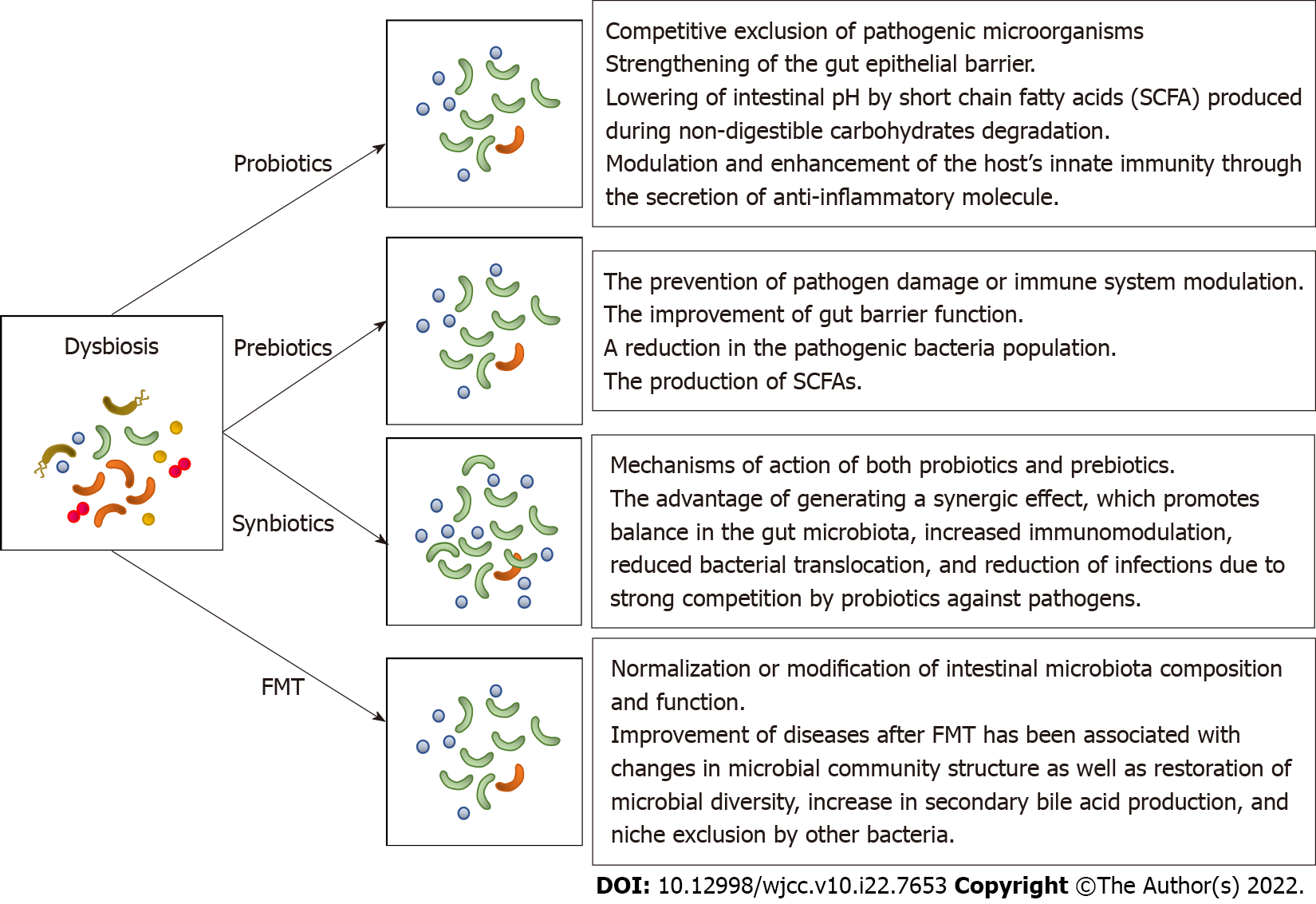Copyright
©The Author(s) 2022.
World J Clin Cases. Aug 6, 2022; 10(22): 7653-7664
Published online Aug 6, 2022. doi: 10.12998/wjcc.v10.i22.7653
Published online Aug 6, 2022. doi: 10.12998/wjcc.v10.i22.7653
Figure 1 Mechanism underlying the efficacy of probiotics, prebiotics, synbiotics, and fecal microbiota transplantation.
Probiotics promote mucin production, production of bacteriocins, and short chain fatty acids (SCFAs), which are responsible for the inhibition of pathogens, inhibition of bacterial translocation, and inhibition of pathogens due to competition for receptors and nutrients. Prebiotics act as nourishment for beneficial bacteria in the commensal microbiota, including the production of SCFAs and antimicrobial peptide. Another mechanism by which prebiotics can inhibit pathogens is by interaction with an adhesion receptor, such as the lectin receptor, demonstrating an antiadhesive action. Synbiotics have mechanisms of action of both probiotics and prebiotics. Moreover, synbiotics have the advantage of generating a synergic effect, which promotes balance in the gut microbiota, increased immunomodulation, reduced bacterial translocation, and reduction of infections due to strong competition by probiotics against pathogens. fecal microbiota transplantation (FMT) provides normalization or modification of intestinal microbiota composition and function. The improvement of human diseases after FMT has been associated with changes in microbial community structure as well as restoration of microbial diversity, increase in secondary bile acid production, and niche exclusion by other bacteria.
- Citation: Nishida A, Nishino K, Ohno M, Sakai K, Owaki Y, Noda Y, Imaeda H. Update on gut microbiota in gastrointestinal diseases. World J Clin Cases 2022; 10(22): 7653-7664
- URL: https://www.wjgnet.com/2307-8960/full/v10/i22/7653.htm
- DOI: https://dx.doi.org/10.12998/wjcc.v10.i22.7653









